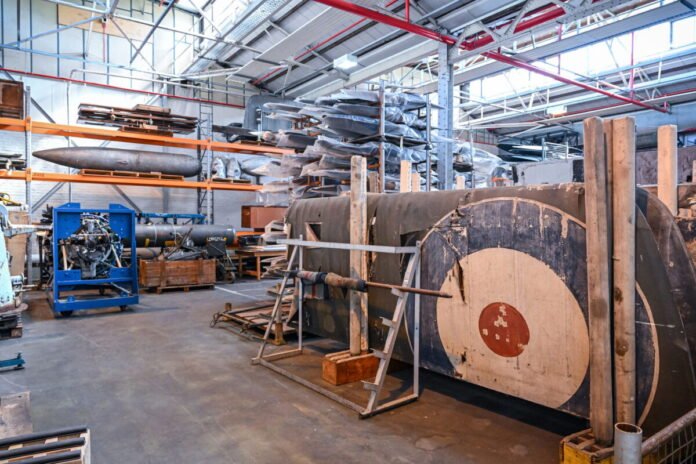The Royal Air Force Museum is working to move over 50,000 historical pieces to its location in the English Midlands, where many of them will be displayed publicly for the first time.
Less than 1 percent of the museum’s vast collection is currently on display, with the rest kept tucked away at a secure but largely inaccessible Ministry of Defense site in Stafford. This remainder, described by museum officials as an “Aladdin’s cave” of treasures, includes aircraft, parts, ejector seats, military uniforms, medals, logbooks, and other memorabilia connected to one of the most storied air forces in history.

In a project cheekily dubbed “The Crate Escape,” the museum is moving the pieces to a new, purpose-built collections hub at the Royal Air Force Museum Midlands in Cosford.
The site currently hosts a number of exhibits on British aviation history, including displays of iconic fighter aircraft like the Supermarine Spitfire, Hawker Hurricane, Gloster Gladiator, and Boulton Paul Defiant, together with their German counterparts, the Messerschmitt Me 109 and Junkers Ju 88. Visitors can also tour the museum’s collection of Cold War-era V bombers and try out a Eurofighter Typhoon flight simulator.
The museum’s other location is in London.

No Small Feat
Ewen Cameron, the curator of the stored collection, said museum staff and volunteers are readying for the move by cataloguing, cleaning, and packing each item by hand. In total, it will amount to over 31,000 hours of work.

“The Crate Escape isn’t just about moving objects,” said Ella Hewitt, manager of individual giving at the RAF Museum. “It’s about bringing hidden RAF stories of bravery, innovation, and sacrifice to light.”
To support the effort, the RAF Museum is soliciting help from individuals and businesses with options to sponsor a moving box at 30 pounds ($40.91), 100 pounds ($136.38), or 1,000 pounds ($1,363.68), and up. Those interested in giving are asked to visit the website to learn more.
The expansion at the Midlands location is scheduled for completion in 2027. It will include a permanent exhibition on the role of the RAF from 1980 on, including space and cyber defense, as well as a learning center and extensive green spaces.







